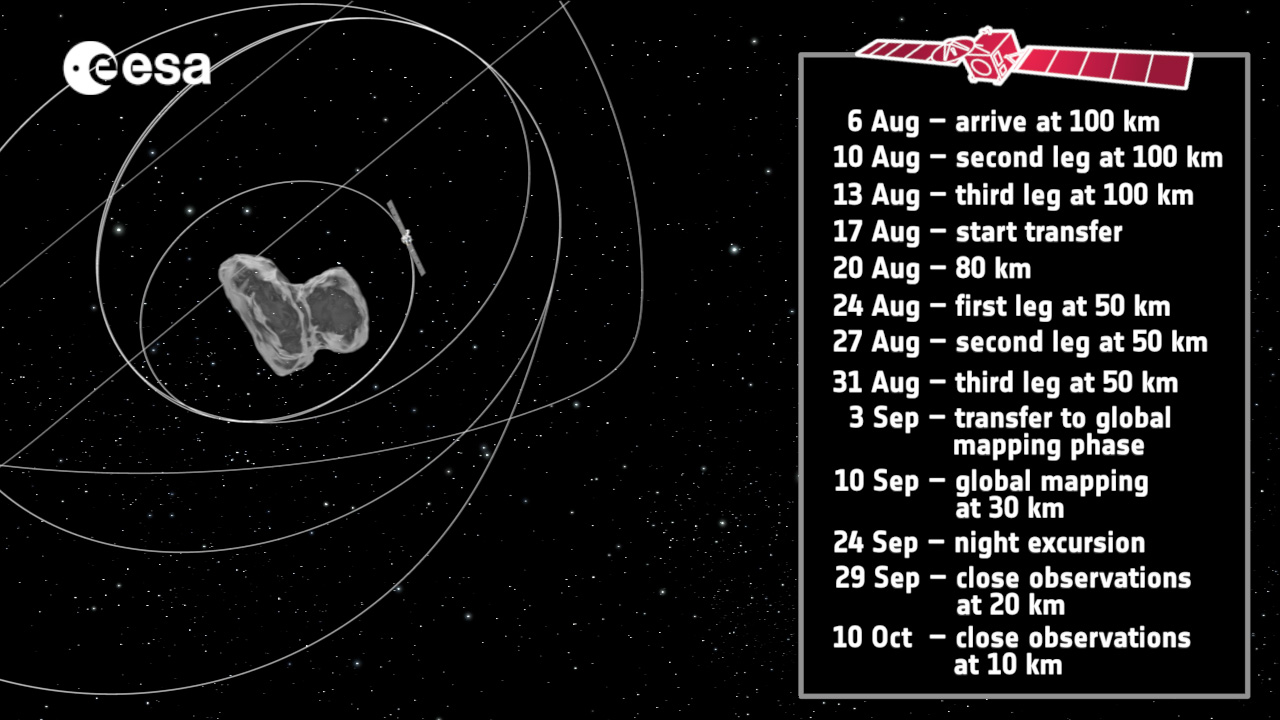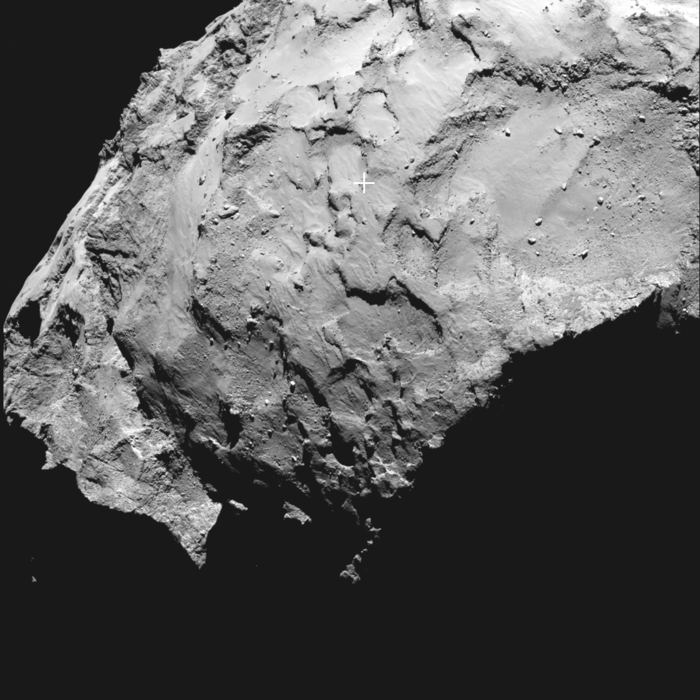Rosetta will approach the comet of Churyumov Gerasimenko at a distance of 10 kilometers

Today the interesting news was published on the Rosetta blog: in just a few days, the interplanetary station will move from a 20-kilometer orbit to a 10-kilometer orbit. Rather, first the orbit from the circular (18.6 km) will be changed to elliptical (18.6 * 9.8 km), by October 10. After that, the device will go into a circular 10-km orbit with a circulation period of 66 hours, by October 15.
After moving to this low orbit, a new phase of the project, called “Close Observation Phase” (COP), will begin. At this stage, high-resolution comet surface images will be taken, which will be used for the final preparation of the comet landing.

A new orbit will enable the use of scientific instruments Rosetta. In particular, dust samples will be collected and an analysis of the gas composition near the comet's nucleus will be carried out.
The interplanetary station will be in low orbit until October 28, after which the pre-landing phase will begin. The station’s orbit will change, become elliptical, with an average radius of 30 km. After another orbit change, the station will release the Philae landing probe, at a distance of 22.5 km from the surface of the core.
The probe’s landing on the comet’s surface is scheduled for November 12. You can read about what kind of work Philae will do . Site J was chosen as the main landing point: The landing will most likely look like this:


Via esa
